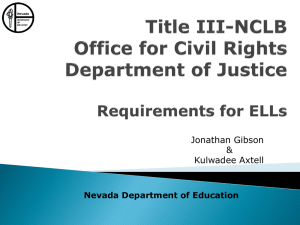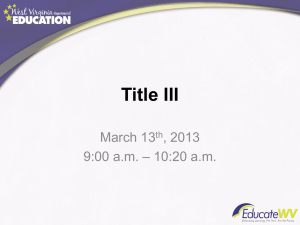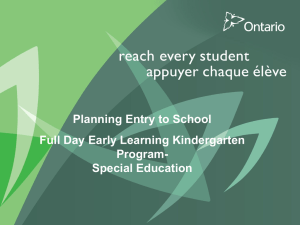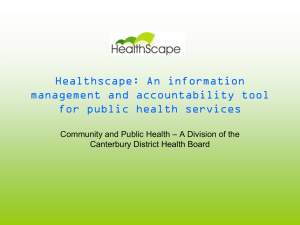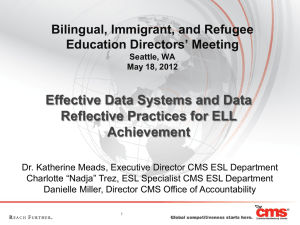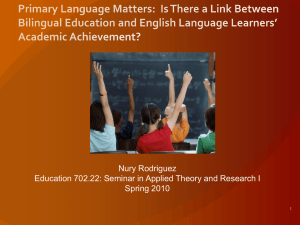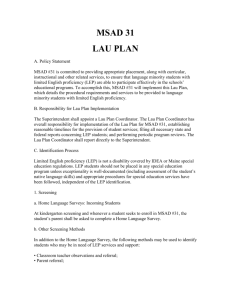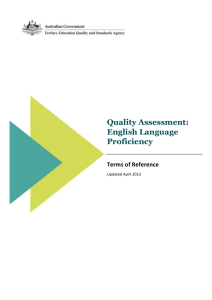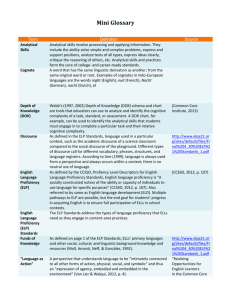Sheltered Instruction Terminology
advertisement
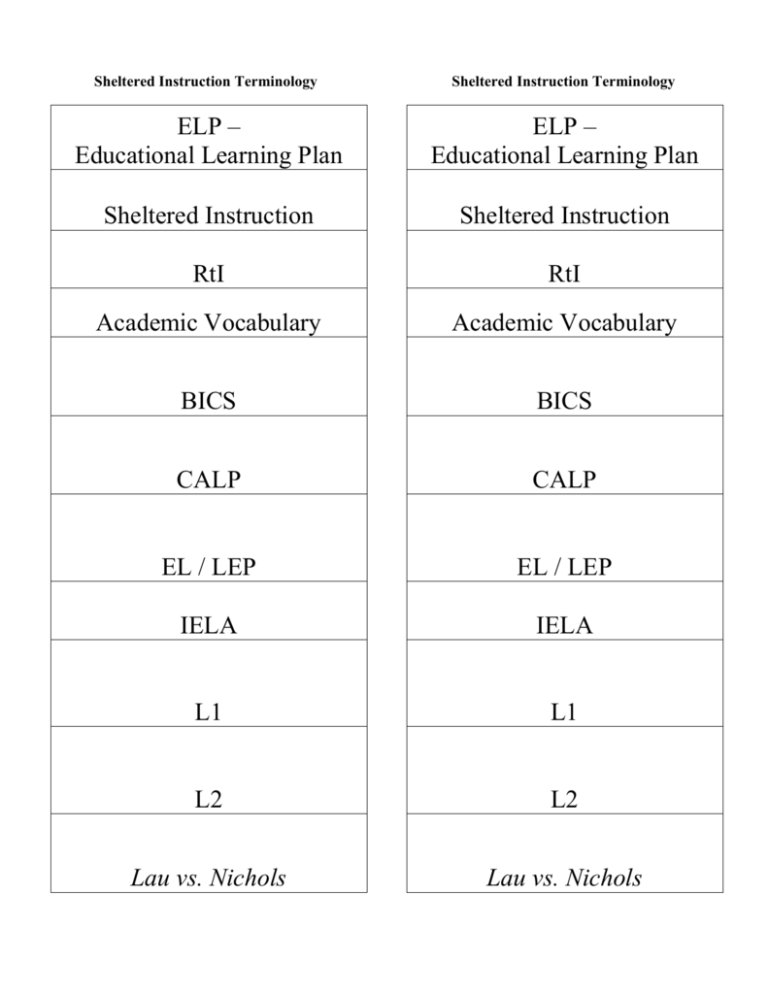
Sheltered Instruction Terminology Sheltered Instruction Terminology ELP – Educational Learning Plan ELP – Educational Learning Plan Sheltered Instruction Sheltered Instruction RtI RtI Academic Vocabulary Academic Vocabulary BICS BICS CALP CALP EL / LEP EL / LEP IELA IELA L1 L1 L2 L2 Lau vs. Nichols Lau vs. Nichols ELP – Educational Learning Plan: Much like a 504 plan, the intention of an ELP is so that every school evaluates the specific individual needs of each LEP student and is helping the student daily, rather than just on assessments. It is recommended that every LEP student has an ELP on file, even if that particular student is not given accommodations in the classroom. Sheltered Instruction: Delivery of instruction through slower speech, giving information visually as well as verbally, and using controlled vocabulary while also striving for academically rigorous instruction that includes grade level content, interactive activities, and higher level questioning (31). The term "sheltered" indicates that such instruction provides refuge from the linguistic demands of mainstream instruction which without modifications is often beyond the comprehension of EL's (45). RtI: Response to Intervention - model of intervention intended to curtail discriminatory labeling and inappropriate placement of students into disability categories (23). Opposite of "waiting to fail" mentality. Academic Vocabulary: Language used in the learning of academic subject matter in formal schooling context; aspects of language strongly associated with literacy and academic achievement, including specific academic terms or technical language, and speech related to each field of study (103). BICS: Basic Interpersonal Communicative Skills or conversational language - usually takes 1-3 years to acquire ELP – Educational Learning Plan: Much like a 504 plan, the intention of an ELP is so that every school evaluates the specific individual needs of each LEP student and is helping the student daily, rather than just on assessments. It is recommended that every LEP student has an ELP on file, even if that particular student is not given accommodations in the classroom. Sheltered Instruction: Delivery of instruction through slower speech, giving information visually as well as verbally, and using controlled vocabulary while also striving for academically rigorous instruction that includes grade level content, interactive activities, and higher level questioning (31). The term "sheltered" indicates that such instruction provides refuge from the linguistic demands of mainstream instruction which without modifications is often beyond the comprehension of EL's (45). RtI: Response to Intervention - model of intervention intended to curtail discriminatory labeling and inappropriate placement of students into disability categories (23). Opposite of "waiting to fail" mentality. Academic Vocabulary: Language used in the learning of academic subject matter in formal schooling context; aspects of language strongly associated with literacy and academic achievement, including specific academic terms or technical language, and speech related to each field of study (103). BICS: Basic Interpersonal Communicative Skills or conversational language - usually takes 1-3 years to acquire CALP: Cognitive / Academic Language Proficiency or academic language - usually takes 5-7 years to acquire CALP: Cognitive / Academic Language Proficiency or academic language - usually takes 5-7 years to acquire EL / LEP: English learner - Limited English Proficient IELA: Idaho English Language Assessment that identifies students' levels of English proficiency as Beginning, Advanced Beginning, Intermediate, Early Fluent, and Fluent. Knowing an English learner's level allows teachers to select ELD objectives that are closely matched to the students' level of English proficiency. EL / LEP: English learner - Limited English Proficient IELA: Idaho English Language Assessment that identifies students' levels of English proficiency as Beginning, Advanced Beginning, Intermediate, Early Fluent, and Fluent. Knowing an English learner's level allows teachers to select ELD objectives that are closely matched to the students' level of English proficiency. L1: An individual's native, or first language. L1: An individual's native, or first language. L2: An individual's second language or the language an individual is working to acquire. Lau vs. Nichols: 1974 lawsuit setting precedent that children who do not speak English are entitled to equal access to school curriculum. L2: An individual's second language or the language an individual is working to acquire. Lau vs. Nichols: 1974 lawsuit setting precedent that children who do not speak English are entitled to equal access to school curriculum.
